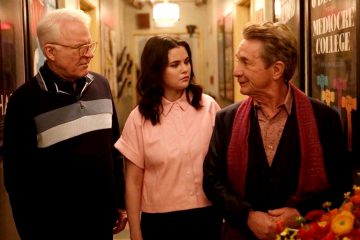A decade after being unceremoniously canceled by NBC, Star Trek was poised to become the next big thing in cinema. Star Trek: The Motion Picture was hotly anticipated by fans, but upon its debut the film had an unfinished quality that hurt its legacy. Thankfully, for the movie’s 40th anniversary, Star Trek: The Motion Picture: The Director’s Cut was released, allowing Robert Wise’s true vision to be seen by fans for the first time. Thanks to Star Trek’s first foray into cinema, Starfleet and the Enterprise it continues to be relevant in pop culture today.Making movies is always a challenge, but The Motion Picture presented unique challenges in its many years of development. Star Trek: The Original Series remained one of the highest-rated series in syndication ten years after its initial run ended. Paramount knew they had to do something with the franchise, but the studio couldn’t decide whether to bring it to television or the big screen. After the success of Star Wars and Close Encounters of the Third Kind, the studio went all-in on the feature film, but pre-sold the release of the film before a script was even finished. Screenwriter Howard Livingston was irascible and constantly fought with Gene Roddenberry. Robert Abel was contracted to do visual effects, but after nearly spending all the budget on a single test shot he was let go. Robert Wise was effectively forced to put together a rough cut of an unfinished movie and release it to the public. Beyond the importance of The Motion Picture to Star Trek’s legacy, the director’s cut was equally important to the venerated director, who passed away in 2005.There are two ways movie fans look at a director’s cut of a movie: those who are feeling charitable see it as a way for the director to wrest control back from a panicky studio. They can also add or remove elements they don’t want in the film. Then, there are those who are more critical of the process and see it as nothing more than a naked cash-grab. The movie is the movie, and once it’s released, the picture deserves to live (or die) on its merits. Robert Wise may have agreed with that latter perspective, at least until Star Wars showed up to “save” Star Trek once again.Deep Space Nine Shows How Star Trek Does Religion
A decade after being unceremoniously canceled by NBC, Star Trek was poised to become the next big thing in cinema. Star Trek: The Motion Picture was hotly anticipated by fans, but upon its debut the film had an unfinished quality that hurt its legacy. Thankfully, for the movie’s 40th anniversary, Star Trek: The Motion Picture: The Director’s Cut was released, allowing Robert Wise’s true vision to be seen by fans for the first time. Thanks to Star Trek’s first foray into cinema, Starfleet and the Enterprise it continues to be relevant in pop culture today.
Making movies is always a challenge, but The Motion Picture presented unique challenges in its many years of development. Star Trek: The Original Series remained one of the highest-rated series in syndication ten years after its initial run ended. Paramount knew they had to do something with the franchise, but the studio couldn’t decide whether to bring it to television or the big screen. After the success of Star Wars and Close Encounters of the Third Kind, the studio went all-in on the feature film, but pre-sold the release of the film before a script was even finished. Screenwriter Howard Livingston was irascible and constantly fought with Gene Roddenberry. Robert Abel was contracted to do visual effects, but after nearly spending all the budget on a single test shot he was let go. Robert Wise was effectively forced to put together a rough cut of an unfinished movie and release it to the public. Beyond the importance of The Motion Picture to Star Trek‘s legacy, the director’s cut was equally important to the venerated director, who passed away in 2005.
There are two ways movie fans look at a director’s cut of a movie: those who are feeling charitable see it as a way for the director to wrest control back from a panicky studio. They can also add or remove elements they don’t want in the film. Then, there are those who are more critical of the process and see it as nothing more than a naked cash-grab. The movie is the movie, and once it’s released, the picture deserves to live (or die) on its merits. Robert Wise may have agreed with that latter perspective, at least until Star Wars showed up to “save” Star Trek once again.
#Star #Trek #Motion #Picture #Cinemas #Important #Directors #Cut
Note:- (Not all news on the site expresses the point of view of the site, but we transmit this news automatically and translate it through programmatic technology on the site and not from a human editor. The content is auto-generated from a syndicated feed.))



